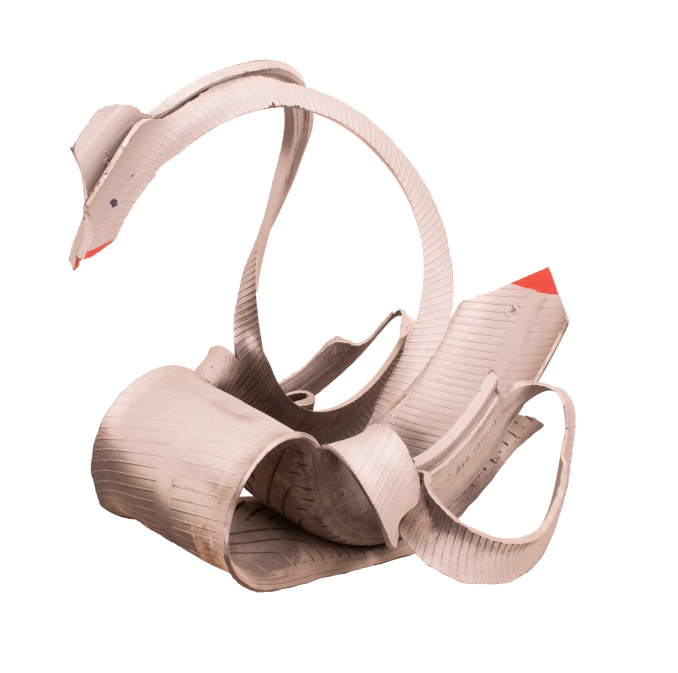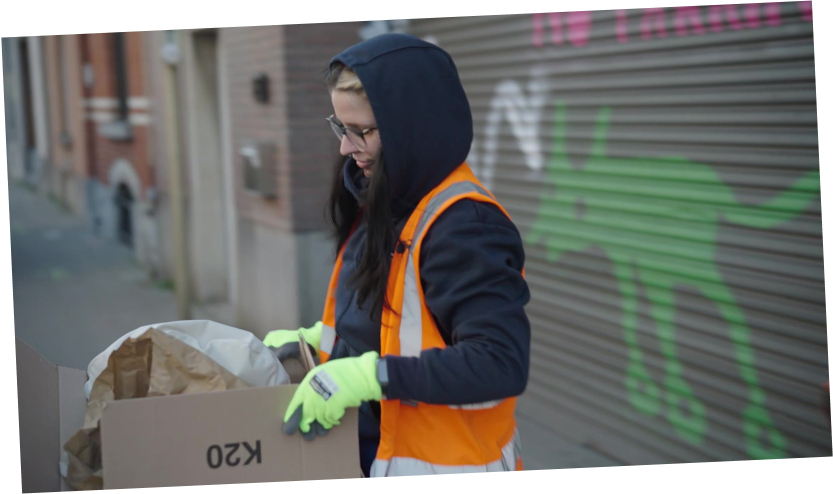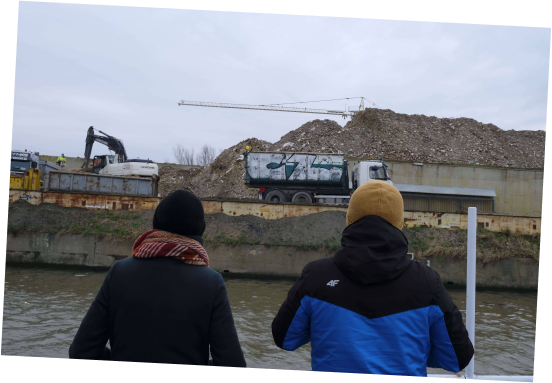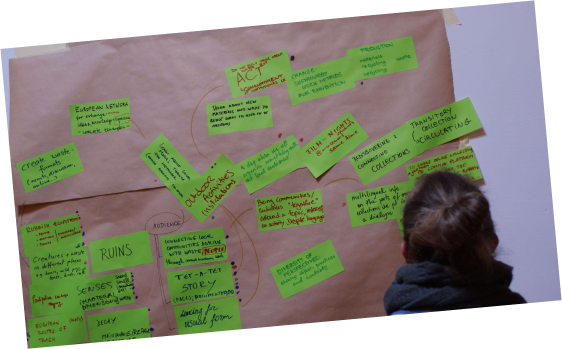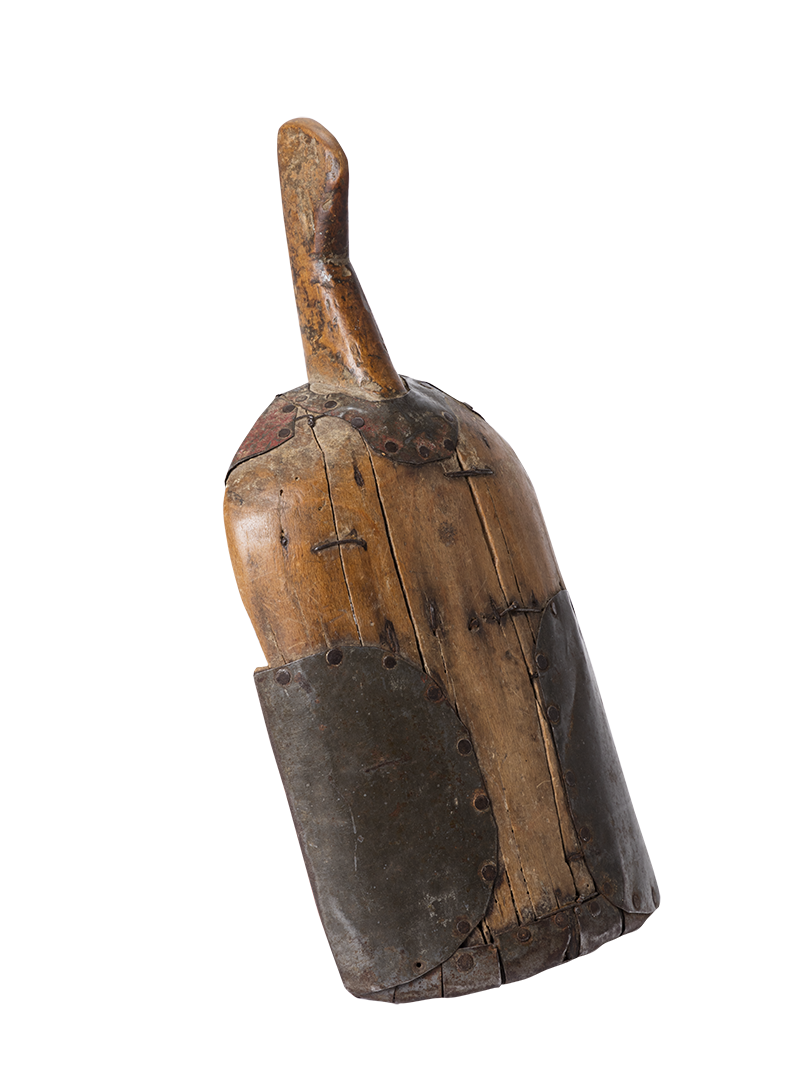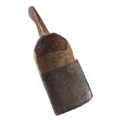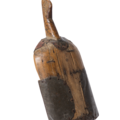Artist/Maker Unknown
Date Production/Creation
20th century
Entry in the museum collection
Terminus post quem 1950
Place of origin
Ozzano Taro, Collecchio, Parma, Emilia Romagna, Italy, Europe
Current location
Ettore Guatelli Museum foundation, Ozzanno Taro, Italy
Material
Wooden scoop with numerous tin patch repairs
Dimension
Cm: 37 (a) 16 (la) 6 (p)
Inventory Number 0062
Keyword Design Reuse Self-made/DIY
Copyright @Fondazione Museo Ettore Guatelli
Status On display
Image Credit Mauro Davoli
Giving up is easy. Repair is the work of the stubborn.
What is this object about, who are the people behind it?
The multiple tin patches held together with wire and used to carry out simple improvised repairs to a flour scoop clearly reflect a desire to prolong its useful life for as long as humanly possible. Entering the Ettore Guatelli Museum, we not only encounter the world of a collector but also become aware of a deep concern for retrieving "flotsam and jetsam" that would otherwise be consigned to oblivion, reflecting, on the one hand, their purely symbolic value in reawakening the memory of those who once owned them and, on the other, their strictly practical usefulness to a rural farming community.
What places is this object related to, how European/transnational is it?
It was in 1994 that Ettore Guatelli published an essay entitled "Waste at the Museum" in the fifth issue of the periodical "Ossimori". In it, he addressed a highly topical issue, now fast becoming an emergency, stressing the need to reflect on the nature of waste and discarded objects and, more to the point, the recovery and recycling thereof. It is here and even more so in waste disposal that the historic key to genuine "democracy" is to be found.
Why and how did this object arrive in the museum’s collection?
In the 1950s, Ettore Guatelli began increasingly regular visits to waste collectors’ storerooms in the Apennines, gradually laying the foundations of his future museum. From the mid-1970s, his collection expanded considerably, becoming unintentionally part of a growing trend in the seventies and eighties for the revival and promotion of popular culture. As a result, his establishment became a unique and inimitable demographic, ethnological and anthropological heritage museum of 20th-century Italy.
What is the relation of this object to waste?
The items displayed in the museum bear testimony to a world of spontaneous design based on improvisation. Their uniqueness resides in the farsightedness of those who refused to regard them as objects to be discarded because they were too old and had outlived their usefulness. Spontaneous design bears witness to human creativity in rethinking, adjusting and repairing objects, reflecting the "make do and mend" philosophy of a rural community governed by the economic principles of reuse and recovery. Nothing was thrown away because everything could be used again, repaired ad infinitum, reassembled and put to different uses.

